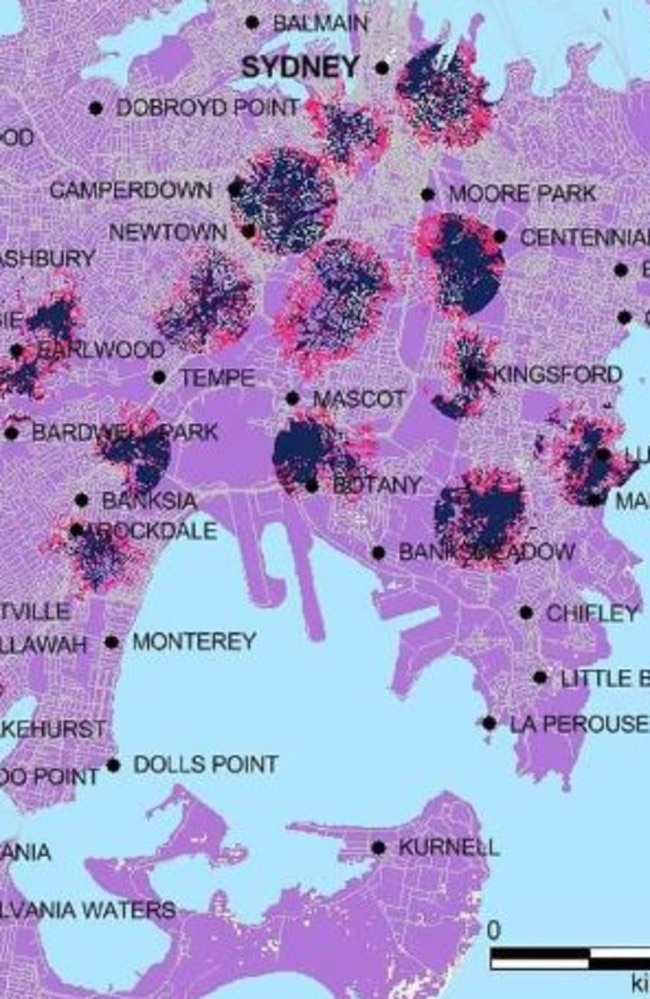5G is set to make streaming faster
Streaming has never been a bigger part of our lives as we stay home amid the coronavirus pandemic and have time to check out new shows and catch up on old favourites.

Consumer Issues
Don't miss out on the headlines from Consumer Issues. Followed categories will be added to My News.
Our enthusiasm for the latest streaming technology and obsession with seeing the next episode of our favourite new show (or watching repeats of old favourites) has made streaming the largest driver of data consumption on the national broadband network.
As the coronavirus pandemic forces many to work from home on residential national broadband network connections that aren't typically designed for the amount of traffic and more people rely on streaming to fill their downtime, network congestion has become an issue.
The extra traffic used by streaming video for entertainment is now congesting a network people need for work, which often involves sending more high volume traffic in the form of videoconferencing through apps like Zoom or Skype.
Already services like Netflix and Disney+ have moved to lower the quality of their streams to reduce congestion.
But if you can get off the NBN altogether, you won't have to worry about the congestion from the rest of the people on it.
With 5G set to roll out across the nation throughout 2020 after becoming available in some areas this year, streaming is set to become faster, smoother and easier, especially in homes with multiple devices.
Speaking before the virus crisis, Optus vice-president of TV content and product development Clive Dickens told news.com.au the Optus 5G network was devised with video consumption as a priority, whether for streaming services, YouTube or contacting loved ones via video calls.
RELATED: The changes you’ll actually see on 5G
RELATED: Is 5G better than the NBN?

“Because 5G operates at such high speeds, it can actually match the growing realm of video streaming,” Mr Dickens said.
“Over half of all our network consumption now is for video, and that can be entertainment like Netflix or Stan or Disney+ as well as Whatsapp, FaceTime, even video for teaching.
“So when someone asks why they should upgrade to 5G, and they say they’re someone who watches a lot of video content in their home, we explain that 5G offers a better video experience,” he said.
Mr Dickens said the 5G network is up to five times faster than the most popular Optus NBN service in peak times.
This means buffering while streaming video, slow download speed, and glitchy video calls will be issues of the past.
“At the moment, the ping speeds are fine for one 4K video stream, but as soon as the kids upstairs jump on Tik Tok, and the partner jumps on to stream some sport, and someone else tries to upload some homework, you can quickly exhaust that bandwidth.
“With Optus 5G home, customers are able to stream more devices over their 5G connection which means everyone can stream their entertainment at the same time,” Mr Dickens said.

The use of streaming to consume video content in our downtime has surged 25 per cent in the past year, pushing the average data consumption to 258GB a month per customer.
But with increased traffic comes congestion, particularly at peak times.
Mr Dickens said the company’s focus on suburbs is ultimately a focus on families and heavy consumers of video content at home.

“We prioritise video networks on our traffic … with Optus 5G home you see it’s being implemented suburb to suburb,” Mr Dickens said.
“When you look at our coverage maps, it looks a bit funny because it’s patchy. Because this is a home service and a mobile service, not a mobile only service, we are prioritising suburbs over the CBD.
“Normally when you look at the coverage it’s the CBD coming out.”

While 5G will eventually be available everywhere, Mr Dickens said the video-first focus comes into account when choosing where 5G is made available next.
“The first NSW suburb to get Optus 5G home was Bonnyrigg, which we chose because it has quite immature Optus NBN coverage, so we upgraded that suburb to offer people who live there choice and value.
“It’s also an area known as being very diverse, with multi-family member dwellings, which is where the speed of the 5G network is needed. People who will be streaming more and on different devices.”

Mr Dickens said there were benefits to Optus controlling its 5G network.
“With Optus NBN, we are actually a reseller of the NBN – but the country owns it.
“We own Optus 5G end-to-end, so we can manage the experience and the video experience for the customer from the moment they opt-in.”
One advantage of the 5G home broadband plan was customers don’t need to wait for a contractor to connect their property to the network and can just plug in the supplied modem.
Originally published as 5G is set to make streaming faster
